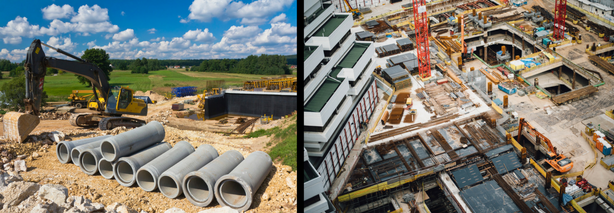Horizontal vs. Vertical Construction
For those that follow the construction software and technology market, there is a noticeable uptake in technology among construction firms. VDC, BIM, mobile project management apps and the Internet of Things (IoT), top the list. This has not gone unnoticed by software firms and venture capital. Both have been investing heavily over the last few years.
Most of this investment, however, has been focused on solving the complexity of delivering vertical building projects on time and under budget by helping contractors improve quality and safety while reducing risk. Much of the complexity in vertical building construction is related to the many trades and material classes that are put in place in a congested area. Software vendors are focused on solving these particular challenges.
While this is great for construction firms in this sector, there is a significant opportunity for technology to solve the same problems in heavy civil or horizontal construction sectors. For vertical and horizontal projects, owners and construction firms have the same issues related to cost, budget and risk. The process workflow in both sectors is also very similar.
What is Vertical Construction / What is Horizontal Construction
The difference is the context in which the projects are completed – the linear and/or spatial context in which workflows occur. This context is also the source of complexity in which the management of equipment and resource logistics is the key to success. Heavy civil construction projects are notably different than vertical projects in several ways:
- The geographic scale is larger, with projects often spanning many miles.
- Contractors need to work around a wide and challenging range of existing conditions such as traffic, wetlands, underground utilities or above-ground infrastructure.
- There are typically fewer subcontractors on horizontal projects.
- Production is often defined by moving materials – earthwork, concrete, asphalt – with heavy equipment.
There are a few software and technology vendors such as B2W Software that focus specifically on solutions for the complexities of heavy civil construction. This includes solving for equipment and material logistics, delivering mobile-first location based applications and providing tools to meet eConstruction requirements.
B2W Software specifically is delivering compelling solutions that are easy to deploy, easy to use and that leverage the latest in cloud, web and mobile technology. B2W has also differentiated itself from other vendors in the heavy civil construction software space with a cohesive platform that unifies estimating and bidding, field tracking and field management, production planning and scheduling, equipment maintenance, data capture and analysis and business intelligence workflows in one solution.
By Rich Humphrey
Rich is a former Vice President of Marketing at B2W Software.
